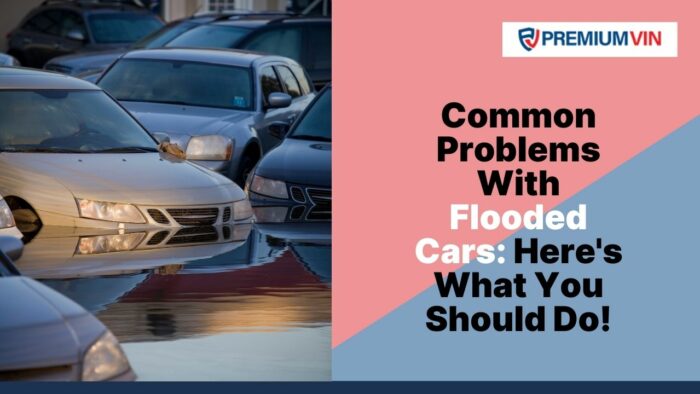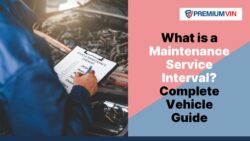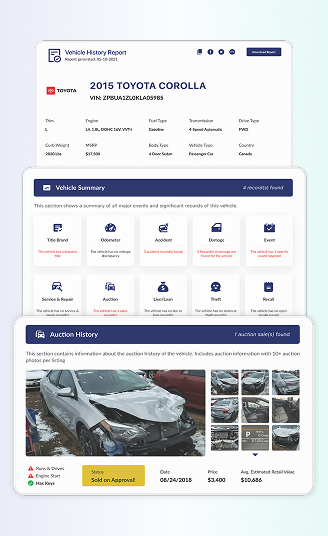According to a recent survey, an estimate of over 212,000 cars were damaged by Category 4 Atlantic Hurricane Ida in 2021. This brought about a lot of flood-damaged cars entering the used car market.
When cars are flooded, bodies can rust prematurely, wiring can become brittle, and both electrical and mechanical systems can also be affected.
This article will provide information on the problems associated with flood-damaged vehicles, how to identify one, and how to avoid buying such vehicles.
Understanding Flood Damage Cars
Cars declared total losses are usually retitled with their state’s Department of Motor Vehicles, and the new titles will disclose that the vehicles have been flood-damaged. Worse yet some used cars might have been owned by multiple persons before being damaged by flood.
Those cars will often be sold to companies that dismantle them and resale usable parts. It is disheartening that most people try to sell these cars without revealing the flood damage; this could create a big risk for the buyers.
Many flood-damaged cars come to auction because the insurance company has deemed them not worth the money to repair. As a result, they are being sold for a steep discount.
According to Consumer Reports, flood-damaged cars are often transported to locations where car shoppers may not be aware of the warning signs to look out for before purchasing a vehicle damaged by floods.
The problem is that water can ruin a vehicle’s electronics, lubricants, and even its mechanical systems.
How To Avoid Flood Damaged Vehicles
How do you avoid buying a car that was in a flood? Here are some helpful ways:
- Get a vehicle history report: Run a vehicle history report on the car based on its VIN before you make a purchase. This check will disclose if the car has been issued a salvage or flood title.
- Check the condition of the fabrics: Look for discolored, faded, or mildewed upholstery and carpeting. Recently shampooed carpets may be cause for concern and also if the carpeting is replaced it may fit too loosely or not match the interior color.
- Check for mud: Check the interior spaces like the glove compartment, beneath the seat, dash, and trunk for signs of mud, rust, or water damage. Check the bottom of the vehicle for open drainage holes.
- Get an Inspection: consider having the car checked by a trusted and certified mechanic or automatic technician before the purchase of any used car. Professional help can ease your mind, especially if the car you are considering has one or more common warning signs.
- Be wary of cheap cars: Check for the typical selling price of the car you are considering purchasing; if a car is priced well below its market value, it may be a red flag that something is wrong.
- Use your sense of smell: Most flood-damaged cars smell awkward. Sellers try to mask the odor with expensive automobile colognes. Find out why a car smells awful or wear a costly cologne.
Inspecting for Damage
While inspecting a car for damage before purchase is good, it is vital to know what to look out for. As mentioned earlier in this article, there are many ways to identify a flood-damaged car. Here is a quick recap:
- Get a vehicle history report: Run a vehicle history report on the car based on its VIN before you make a purchase. This check will disclose if the car has been issued a salvage or flood title.
- Check the condition of the fabrics: Look for discolored, faded, or mildewed upholstery and carpeting. Recently shampooed carpets may be cause for concern and also if the carpeting is replaced it may fit too loosely or not match the interior color.
- The Sniff test: The easiest and quickest way to identify a flood-damaged car is to literally sniff it. The is highly difficult to get rid of moldy aroma from a flood-damaged car. This unpleasant smell is a helpful clue for prospective buyers.
- Get an Inspection: Before purchasing any used car, consider having it checked by a trusted and certified mechanic or automatic technician. Professional help can ease your mind, especially if the car you are considering has one or more common warning signs.
- Take a test drive: You’ll need to test the car extensively to ensure all electrical components are operational. But before that, poke your head under the dash and gently bend the electrical wires to see if they’ll be brittle, if they do, it clearly a sign of water damage. Water damage to the electrical system is harder to view, so you need to take the car on a test drive and try out all the electronics.
READ ALSO: How big does a hail have to be to damage a car
Repair and Restoration
If water penetrates your car, you would need steep upholstery and carpet since they would be in bad shape. You may also have to repair or replace another component that may have been affected by the flood.
The total repair cost is depended on which parts are worn out and requires to be replaced and the price of labor. Fixing a contemporary automobile that has been flooded is a hard task and should in the best interest be done by a professional auto mechanic or an automotive technician.
Do not attempt the repairs yourself; the dangers are real. These steps could be taken to cleanse the engine:
- Check the oil to see if there is any water contamination
- Loosen the oil drain plug and release any water
- Remove the spark plugs
- Change the oil and the oil filter
Dealing with Insurance
According to Esurance, comprehensive coverage can cover damage caused by hail, water, and floods. However, this is only in some cases. To be sure your comprehensive policy covers flood damage, it is important to ask your insurance agent specifically.
If you have a basic level of car insurance, for example, just liability coverage, flood damage wouldn’t be covered. For flood damage to be covered, you need Comprehensive Coverage. Before purchasing that flood-damaged car, here are a few things you need to know:
- A flood-damaged car will likely be a total loss if fully submerged in water.
- Vehicles with flood-damaged titles in one state may receive a clean title in another.
- Protect yourself from fraud by getting a vehicle history report, a thorough inspection by a mechanic, and more.
Prevention and Conclusion
Flooded cars refer to cars that are fully immersed in water or any car that was in water during a flood or ventured through a flooded road. Sadly, the restoration of a flooded car back into service is not easily done. If you’re a resident of a place that is often flooded, then you ought to be prepared with what must happen when your car gets affected by water.
Here are some bad practices that you should avoid to prevent water damage in your vehicle:Here are some bad practices that you should avoid to prevent water damage in your vehicle:
- Keeping your car in a place that is likely to be flooded (for instance, in a basement or near the riverbank etc).
- Driving your vehicle through a row of cars plunged into the flooded streets
- Taking your car out in the open without cover (sometimes it could be a mistake like not folding the hood of a convertivle car or parking under an open sky).
In conclusion, cars that have been through floodwater may develop electrical problems, interior problems, and engine problems and many others. In addition to this, ensure the carpet and or drain plug is in good working condition before checking the seat-mounting screws and lights.
Unfortunately, not all cars that were affected by water are compensated under insurance but that will depend on the insurance policy that you have. Dial your insurer to learn whether the cost of your car’s repairs will not surpass its value.







